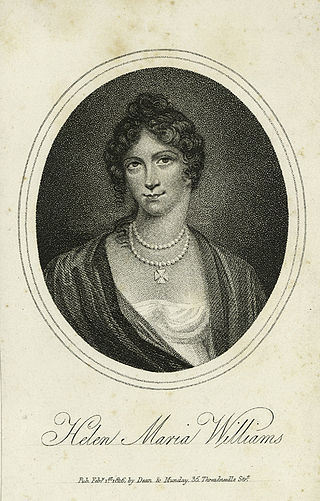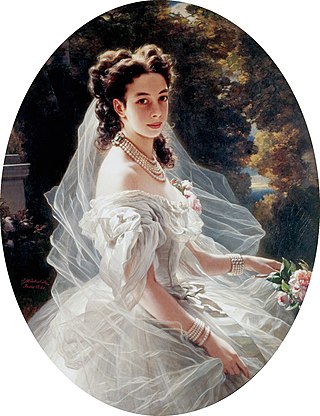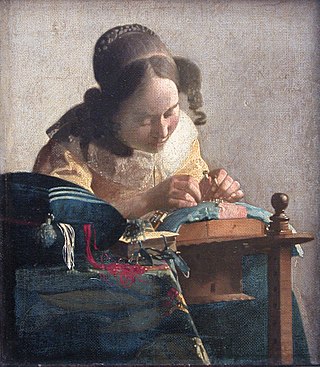Related Research Articles

Leopold Ritter von Sacher-Masoch was an Austrian nobleman, writer and journalist, who gained renown for his romantic stories of Galician life. The term masochism is derived from his name, invented by his contemporary, the Austrian psychiatrist Richard von Krafft-Ebing. Masoch did not approve of this use of his name.

Thriller is a genre of fiction with numerous, often overlapping, subgenres, including crime, horror, and detective fiction. Thrillers are characterized and defined by the moods they elicit, giving their audiences heightened feelings of suspense, excitement, surprise, anticipation and anxiety. This genre is well suited to film and television.
The Dana Girls was a series of young adult mystery novels produced by the Stratemeyer Syndicate. The title heroines, Jean and Louise Dana, are teenage sisters and amateur detectives who solve mysteries while at boarding school. The series was created in 1934 in an attempt to capitalize on the popularity of both the Nancy Drew Mystery Stories and the Hardy Boys series, but was less successful than either. The series was written by a number of ghostwriters and, despite going out-of-print twice, lasted from 1934 to 1979; the books have also been translated into a number of other languages. While subject to less critical attention than either Nancy Drew or the Hardy Boys, a number of critics have written about the series, most arguing that the Dana Girls' relative lack of success was due to the more dated nature of the series.
Gabriel Knight is a series of point-and-click adventure games released by Sierra On-Line in the 1990s created by Jane Jensen. The titular character is an author and book store owner in New Orleans who is investigating a strange series of murders when he learns he is descended from a long line of Schattenjäger. After undergoing a spiritual trial, Gabriel becomes the new Schattenjäger, called on to stop those who use supernatural methods to threaten others. To signify this, he wears the Ritter Talisman, a protective medallion. Not having supernatural abilities himself, Gabriel mainly opposes his enemies with cunning and insight after investigation and research. In the first game, he is assisted by Grace Nakimura. In the two sequels, the two act as partners against evil, with Grace being a playable character.

Leopold Anton Johann Sigismund Josef Korsinus Ferdinand Graf Berchtold von und zu Ungarschitz, Frättling und Püllütz was an Austro-Hungarian politician, diplomat and statesman who served as Imperial Foreign Minister at the outbreak of World War I.

Helen Maria Williams was a British novelist, poet, and translator of French-language works. A religious dissenter, she was a supporter of abolitionism and of the ideals of the French Revolution; she was imprisoned in Paris during the Reign of Terror and spent much of the rest of her life in France. A controversial figure in her own time, the young Williams was favourably portrayed in a 1787 poem by William Wordsworth.

Baron Franz Nopcsa von Felső-Szilvás was a Hungarian aristocrat, adventurer, scholar, geologist, paleontologist and albanologist. He is widely regarded as one of the founders of paleobiology, and first described the theory of insular dwarfism. He was also a specialist on Albanian studies and completed the first geological map of northern Albania.

Pauline Clémentine Marie Walburga, Princess of Metternich-Winneburg zu Beilstein was an Austrian socialite, mainly active in Vienna and Paris. Known for her great charm and elegance as well as for her social commitment, she was an important promoter of the work of the German composer Richard Wagner and the Czech composer Bedřich Smetana. She was also instrumental to the creation of the haute couture industry.
Edward Richard Lambton, 7th Earl of Durham, commonly known as Ned Lambton, is a British peer and musician. He has played guitar in a country band named Pearl, TN.

Gabriel Knight 3: Blood of the Sacred, Blood of the Damned is a point-and-click adventure game created by Jane Jensen, developed and published by Sierra Studios, and released for Microsoft Windows in 1999. The sequel to 1995's The Beast Within: A Gabriel Knight Mystery, the game's story focuses on the lives of Gabriel Knight and Grace Nakimura as they become involved in a case to track down a kidnapped infant, becoming embroiled in a mystery that involves vampires, the Knights Templar, the Holy Grail, and Jesus within the Languedoc province of France; the story itself is inspired by a real-life treasure conspiracy associated to the area.
Sarah Smith is an American author living in Brookline, Massachusetts.

A masked villain, also seen as masked mystery villain, is a stock character in genre fiction. It was developed and popularized in movie serials, beginning with The Hooded Terror in The House of Hate, (1918) the first fully-costumed mystery villain of the movies, and frequently used in the adventure stories of pulp magazines and sound-era movie serials in the early twentieth century, as well as postmodern horror films where the character "hides in order to claim unsuspecting victims". They can also appear in crime fiction to add to the atmosphere of suspense and suspicion. It is used to engage the readers or viewers by keeping them guessing just as the characters are, and suspension by drawing on the fear of the unknown. The "Mask" need not be literal, referring more to the subterfuge involved.

Gregory Gaye was a Russian-American character actor. The son of an actor, he was born in St. Petersburg, Russia. He was the uncle of actor George Gaynes.

The Scarlet Pimpernel is a 1982 British romantic adventure television film set during the French Revolution. It is based on the novels The Scarlet Pimpernel (1905) and Eldorado (1913) by Baroness Emmuska Orczy, and stars Anthony Andrews as Sir Percy Blakeney/the Scarlet Pimpernel, the protagonist, Jane Seymour as Marguerite St. Just, the love interest, and Ian McKellen as Chauvelin, the antagonist.
Events from the year 1814 in France.

The Lacemaker is a painting by the Dutch artist Johannes Vermeer (1632–1675), completed around 1669–1670 and held in the Louvre, Paris. The work shows a young woman wearing a yellow bodice, holding up a pair of bobbins in her left hand as she carefully places a pin in the pillow on which she is making her bobbin lace.
George de Worms, 2nd Baron de Worms (1829–1912) was an Austrian aristocrat, and an English public official and banker.
Baron Solomon Benedict de Worms was an Austrian aristocrat, plantation owner in Ceylon, and stockbroker in London.

Count Maximilian Friedrich Karl Franz von Hatzfeldt zu Trachenberg was a Prussian aristocrat and diplomat. By birth he was member of an ancient House of Hatzfeld.
References
- ↑ Durham, Carolyn A. (2005). Literary globalism: Anglo-American fiction set in France. Bucknell University Press. pp. 134–5. ISBN 978-0-8387-5608-9.
- 1 2 3 Durham, Carolyn A. (2005). Literary globalism: Anglo-American fiction set in France. Bucknell University Press. p. 135. ISBN 978-0-8387-5608-9.